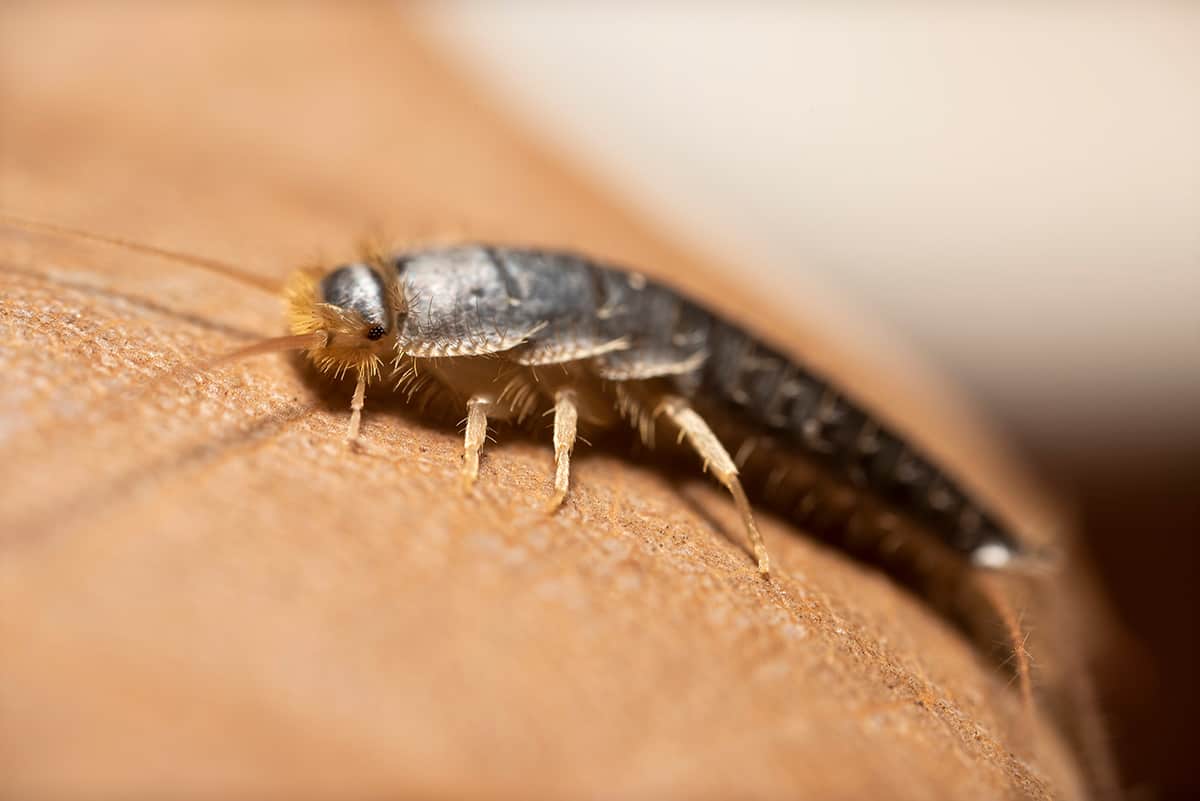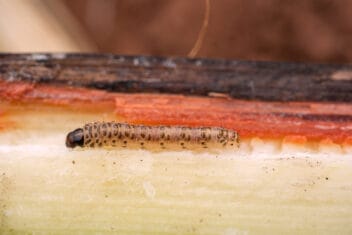Have you ever opened the pantry to find a silvery mass of scaly creatures? It’s a shocking sight. Silverfish look out of place on land, but these insects make themselves at home in dark, humid places.
As creepy as these insects appear, silverfish are harmless carb addicts, glutting themselves on flour, sugar, or other carby-treats. If you’re not interested in running an all-you-can-eat buffet, here’s how to get rid of these hungry invaders.
Meet Silverfish
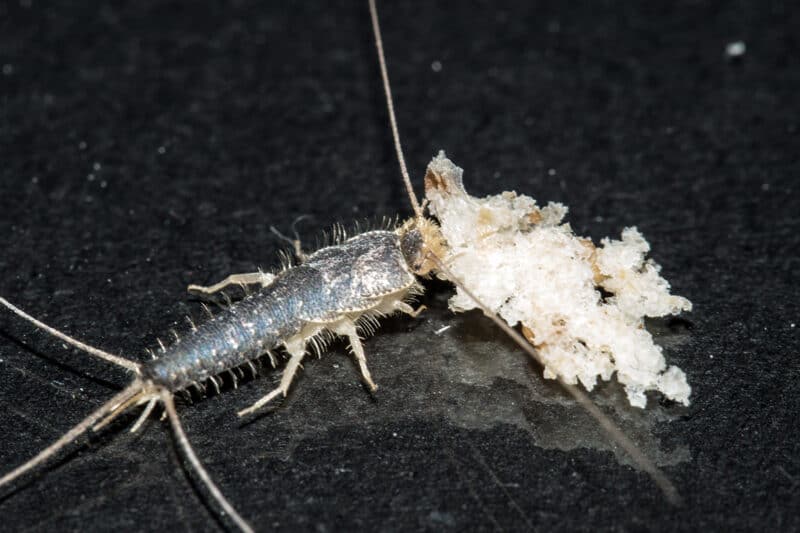

These creatures look and move like tiny fish – smaller than minnows – swimming across the floor. When I stumbled on an infestation at the bakery where I worked, all I could do was stare. I crouched down to watch the silverfish in fascination. They’re beautiful in a disturbing way.
Watching their silvery bodies undulate out of dark crevices can inspire some pretty spooky nightmares. But don’t worry. Though they are creepy, they aren’t dangerous to your or your pets’ health.
It’s easy to recognize silverfish. They’re usually under an inch long, and their distinctive, teardrop bodies are wingless and scaly. The first time I saw silverfish, I knew exactly what it was. But it’s still a good idea to be certain that’s what you’re dealing with, even though they’re pretty distinct.
There are a few insects that look very similar to silverfish, such as firebrats, woodlice, and jumping bristletails. Jumping bristletails look the most like silverfish to me, but don’t be surprised if you mistake a silverfish for an earwig. It’s a common mistake.
Silverfish (Lepisma saccharinum) can range in size from under 1/2 inch to just over 3/4 of an inch. They’re quick little guys, despite their unique way of moving. Silverfish have long antenna on their heads and three, slender little bristle-tails that trail out behind them. Like all insects, silverfish have six legs. Unlike most of their relatives though, silverfish have two compound eyes.
Unlike jumping bristletails, silverfish love living indoors. They’ll happily settle anywhere warm and humid – like your kitchen. They’re also nocturnal, so it’s easy to miss the early signs of an infestation.
Finding Secretive Silverfish
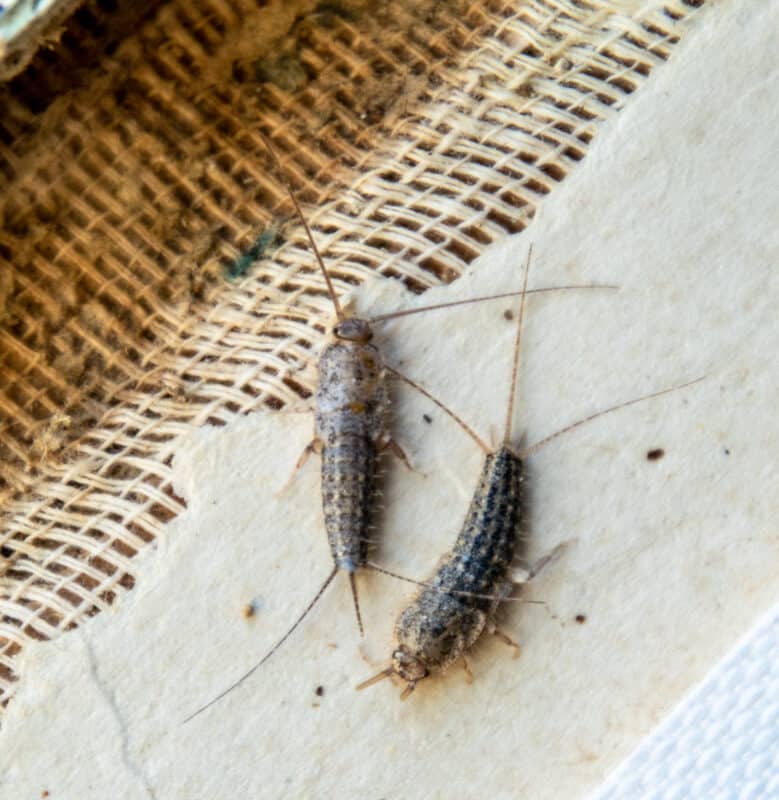

If you’ve recently surprised a few silverfish while cleaning the cellar or saw a few darting out of sight during a late-night bathroom visit, you’ve found the start of an infestation. Silverfish multiply quickly. Females are consistently laying two to three eggs per day once they’ve reached maturity.
Since silverfish reach maturity at 4 weeks and can live for 2-8 years, that adds up to a lot of eggs.
Their secretiveness can make it hard to find the hoard, though. Silverfish are fast, and they’ll dart back into the darkness quickly if you surprise them with light.
Look for them in bathrooms, under sinks, in closed pantries, cellars, basements, attics, and behind baseboards or large pieces of furniture. They can survive for over a year without food, so don’t be surprised if they seem to be far from nourishment.
Silverfish also have a very broad definition of food. They love carbs so much that their Latin name Lepisma saccharinum refers to that addiction to sugary carbs (saccharins). But while they’d love to just sit there devouring your flour, sugar, and cereal, silverfish will just as cheerfully eat glue, paper, blankets, and the dead bodies of other insects.
Signs of Infestation
Whether you’ve actually seen your little invaders or not, there are some clear signs of infestation to keep an eye out for.
If your climate tends toward humidity, you’re at greater risk for a silverfish invasion. Take a look at the edges of at-risk items. Are their tiny notches in your book covers? Holes in your magazines? These are signs that silverfish are munching on your papers at night.
Infested materials may also show yellowish stains, tiny, black pellets (feces), or silvery scales the insects dropped as they fed. You should discard any food that shows signs of being invested by silverfish, and clean any books or papers as soon as possible.
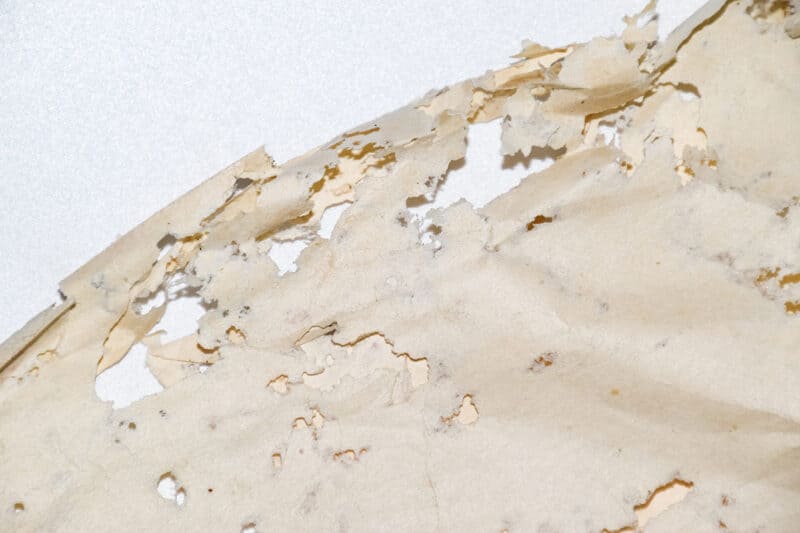

Since silverfish eat glue, they can also cause your wallpaper to start looking patchy. Look for signs of silverfish on your walls if the wallpaper develops holes or faded patches.
Fortunately, silverfish aren’t directly harmful to you, your pets, or your livestock. They don’t bite, and they won’t pass diseases on to you. But their infestations can still cause stress, property damage, and the loss of food. If you discover an infestation, it’s time to take action.
Getting Rid of Silverfish
Long-lived, secretive insects with an abundance of offspring are a challenge to get rid of. But there are a lot of ways to make your home inhospitable to them. Creating an unwelcoming environment is the first step in driving out these little pests.
So, what makes a house repellent to silverfish?
1. Dehumidify
If you can, start by getting rid of some humidity. Remember, silverfish can’t survive in a dry environment. If your house tends toward dampness, get a dehumidifier. Use the fan in your bathroom or open a window while showering to encourage all that wet air to disperse.
Check out your landscaping – does water have an easy way to flow away from your house, or does it pool up near the foundation? Improve the drainage, and your basement or crawlspace will be able to dry out a bit.
If you notice any leaky pipes or seeping water in or around your house, fix them quickly. Excess water creates an ideal environment for silverfish and other invasive insects.
2. Seal Up Cracks


If you notice any cracking in the stone, brick, concrete, or even in the caulking around your windows – seal it up. Silverfish lay their eggs in these safe-havens, and you definitely don’t want to provide space for generations of young silverfish.
3. Keep Food Covered
If you’ve been storing flour, sugar, and other grains in the bags they came in, it’s time to stop. Move all your food to glass or ceramic containers that silverfish can’t chew through. You can store flour bags in the freezer or use large plastic buckets with secure lids to store bulk items.
Vegetables should be out of reach as well. Store them in the refrigerator or some other cool place where warmth-loving silverfish won’t venture. Put your bread in a breadbox and your muffins in one of those adorable tins – turns out grandma knew what she was doing with all those little containers.
4. Vacuum Often


Pull out the vacuum often. If you don’t vacuum daily, now might be a good time to start. Vacuuming removes any crumbs of food, dead insects, and of course, it can remove any silverfish who might be in the area as well.
5. Apply Dusts
In basements, attics, and other areas where vacuuming is unlikely to become a daily occurrence, try dusting with powders. Diatomaceous earth and borax are safe, natural options. Diatomaceous earth can slice up the soft bodies of insects like silverfish, while borax looks like food to them. The insects eat it and die.
Both diatomaceous earth and borax are safe and non-toxic to humans and pets. They’re also easy to find at hardware stores. If you’re hoping to fight off an invasion without resorting to toxic insecticides, a few sprinklings of borax and diatomaceous earth can help.
6. Cedar and Lavender


While it’s unlikely they’ll drive off a full infestation this way, combining cedar and lavender essential oils can help create an unwelcoming atmosphere for silverfish. Just as cedar and lavender can drive away moths from your wool and silk clothing, they can also drive away silverfish.
Put a diffuser in areas where silverfish are congregating and hang dried lavender in your pantry. Tansy, peppermint, and wormwood are also great ‘strewing herbs’ to drive insects away from your pantry. My personal favorite is a wormwood called ‘sweet Annie’ (Artemesia annua).
What About Insecticides?
I avoid using conventional insecticides because of the damage they do to the environment. Conventional insecticides wipe out all the beneficial insects and arachnids in a home, as well as the offending species. They’re also dangerous to pets, houseplants, and people.
But sometimes the invaders just aren’t leaving. If you need to turn to conventional insecticides do so with care. Make sure to keep your pets, plants, and especially your children away from these poisons.
Some compound insecticide sprays like propoxur, chlorpyrifos, and bendiocarb can protect your house for over a month after application. Apply the sprays in the most infected areas, allow them to work, and then follow up with an irritant spray. Pyrethrins are irritating sprays that will drive the affected insects back into the areas where long-lasting insecticides are working.
Remember though that these sprays aren’t just working on your silverfish. Use them safely. Follow all the instructions on the packaging and don’t leave children or pets unsupervised in a sprayed house.
